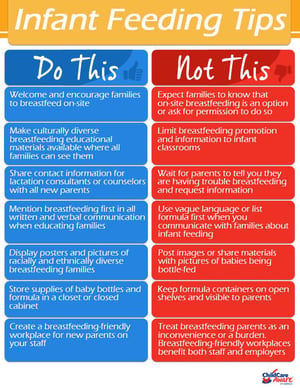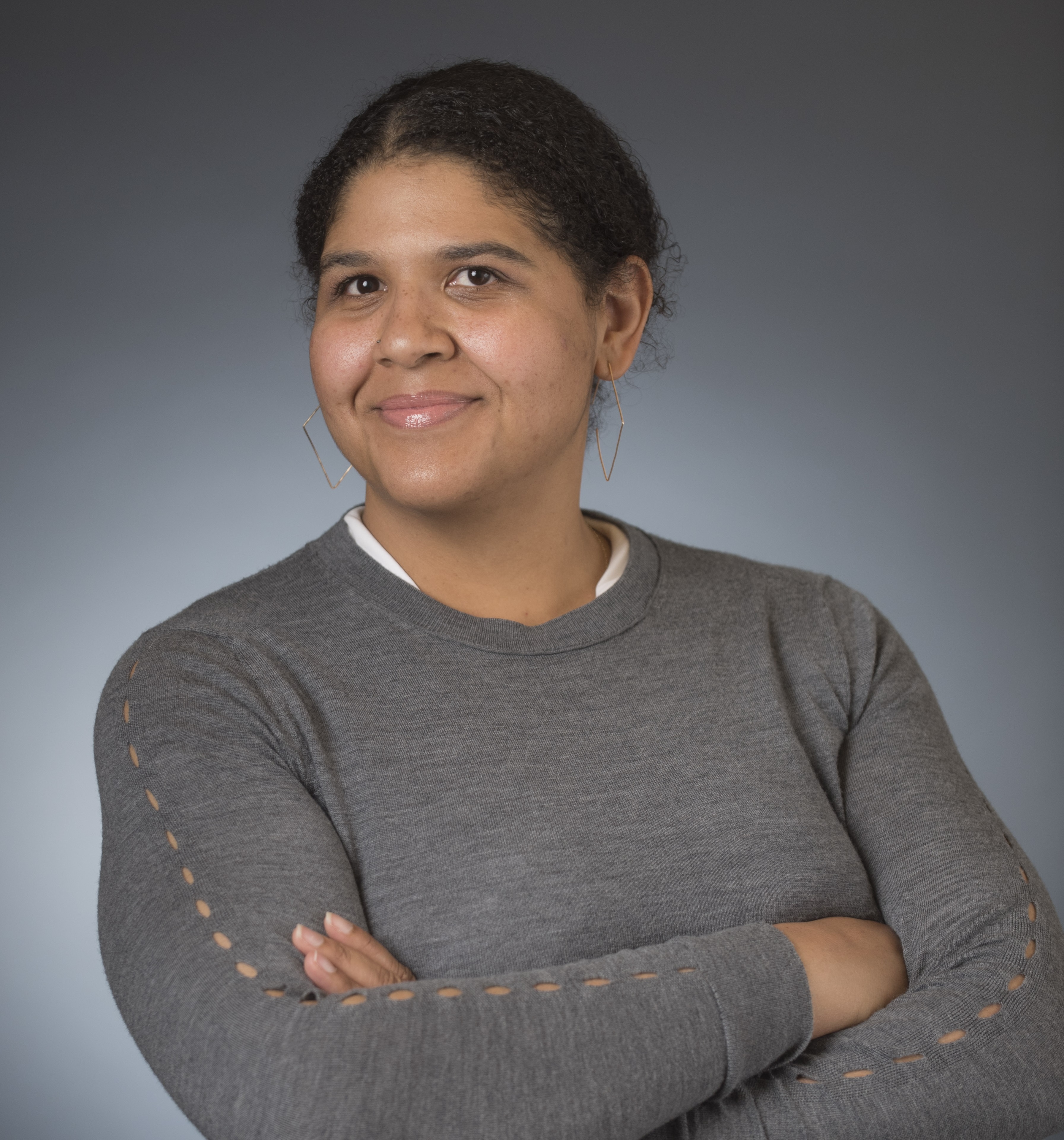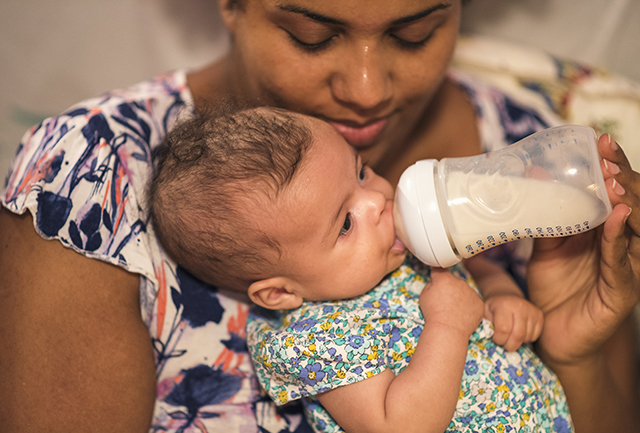 Some families where breast milk is milk of choice don't always rely on the mother to handle feeding. Sometimes, the mom pumps milk so that co-parents or other family members participate in the feeding process—and sometimes provide breast milk to child care providers to feed infants too.
Some families where breast milk is milk of choice don't always rely on the mother to handle feeding. Sometimes, the mom pumps milk so that co-parents or other family members participate in the feeding process—and sometimes provide breast milk to child care providers to feed infants too.
While not every family is able to breastfeed their baby, many families who want to breastfeed are not able to do so regularly, for many reasons. We know this from the numbers: many women start breastfeeding at birth, but stop in the first six months.
This is a problem because there are many health benefits to exclusive breastfeeding for the first six months of a child's life, and then continuing the practice as food is introduced. According to the National Institutes of Health, the benefits to infants include:
- Some protection against common childhood infections
- Lower risk of infant death, including a lower risk of Sudden Infant Death Syndrome.
- Physical and emotional benefits from the skin-to-skin contact between mother and baby
Other studies suggest that breastfeeding may reduce the risk for:
- Certain allergic diseases
- Asthma
- Obesity
- Type 2 diabetes.
It also may help improve an infant's cognitive development.
There are also health benefits for breastfeeding mothers, like a lower risk of developing type 2 diabetes, high blood pressure, high blood pressure, and cardiovascular disease.
While we know that breastfeeding rates decrease for all women, certain groups -- young women, poor women, and women of color -- have lower rates of breastfeeding overall and lower rates of breastfeeding-only at six months. This means we need to figure out the barriers families in these communities face in breastfeeding for the full six months or beyond, and we must create supports or solutions that help them do that.
Breastfeeding can be hard for many reasons—practical ones like challenges in getting infants to latch or finding a comfortable position to finding time or space to pump milk while at work. Combine those challenges with the amount of money and energy spent on advertising formula to new families through the media and partnerships with hospitals and physicians, and it makes sense that many women stop breastfeeding after they start. Many of us live in environments where formula feeding is seen as the normal way to feed, and many child care programs, physicians and others assume that children will be formula fed. That is why it is important that child care settings are spaces free of marketing or assumptions about formula use.
Child Care Resource and Referral Agencies (CCR&Rs) provide important information to parents about how to look for quality child care that helps children grow up healthy. They also provide child care providers with the information and support they need to provide quality care that keeps kids healthy and safe. CCR&Rs can play a big role in helping child care centers and family child care homes become spaces that support families that want to breastfeed children, and should be leaders in helping families identify places that support their feeding choices.
Below are some common barriers or concerns with supporting breastfeeding and some solutions:
| Barriers/Concerns |
Solution |
|
Child care providers who are also new moms don’t have time or space to pump milk or feed their children
|
Create a Breastfeeding Friendly workplace for new mothers on staff:
|
| Parents do not have space to feed their children on-site | Create a private, comfortable space for parents to breastfeed and pump (comfortable chair with arms, small table, electrical outlet, signage indicating “room in use”) and/or support a norm of breastfeeding in the infant classroom or where the rest of the children are. |
| Not all providers know how to properly handle breast milk. ECE providers often find it difficult to attend training, | Give all staff breastfeeding support training. It can be incorporated into other professional development or continuing education opportunities. Information about breastfeeding support can also be included in other annual training. |
| Not all providers know how to properly store breastmilk | Provide proper refrigeration and space for breast milk. |
| Policies assume families will feed formula unless they ask about breastfeeding | Make it a policy to ask all families if they will provide breast milk, rather than assuming they will do formula or ask about breastfeeding policies themselves. |
| Formula is the message they see | Remove formula messaging and images of kids with bottles and replace with images of mothers breastfeeding. Make sure that your images of infant feeding reflect the families that attend the programs. |
| Complementary feeding too early | Work with parents of infants from the beginning to develop an infant feeding plan and revisit every month (accompanied by recommendation that complementary foods not start until 6 months); be clear that just because the child is eating solid foods does not mean that the child cannot breastfeed anymore. |
Resources to Share
Child Care Aware® of America has developed infant feeding tips for you to share on social media or to download and print as posters. Find it below and share with your programs or peers.








